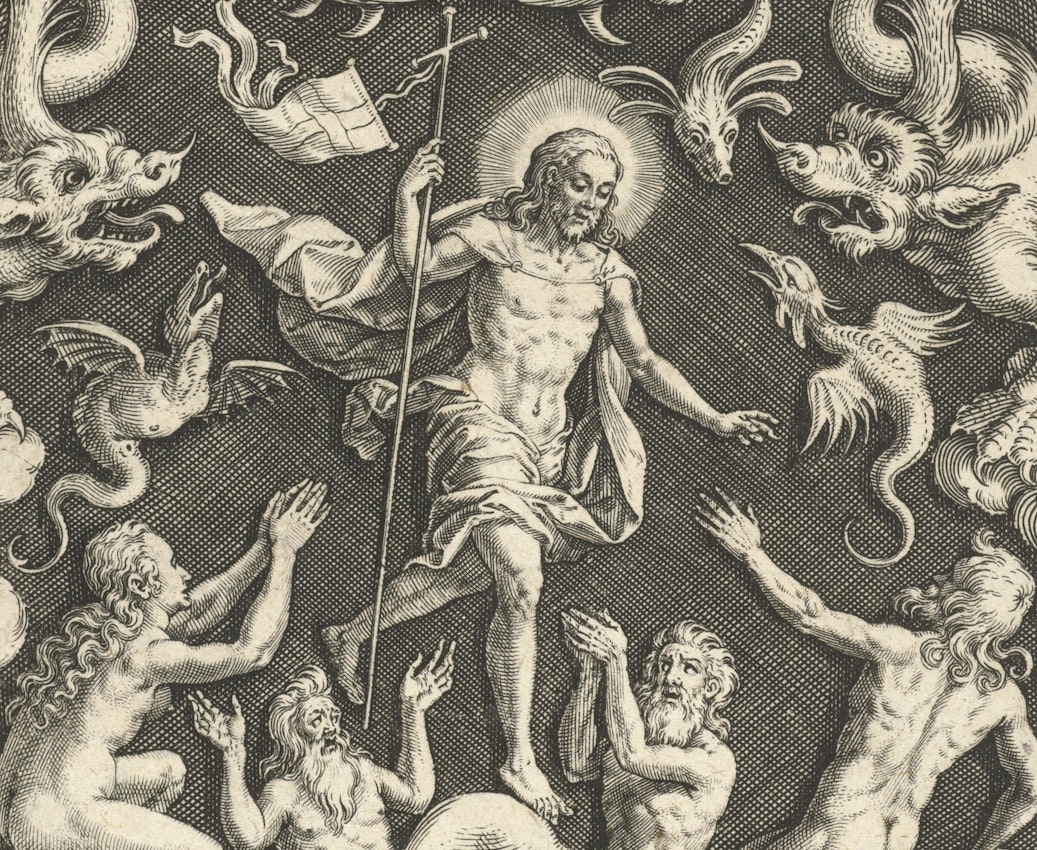
Grotesqueries at Gethsemane: Marcus Gheeraerts’ Passio Verbigenae (ca. 1580)
In his final days, Christ is haunted by grotesqueries. Cherubs and putti ogle the last supper’s lamb. Hybrid creatures sprout up in the Garden of Gethsemane. And during his descent into Limbo, demonic bodies roar and hiss at the Son of God.
A series of thirteen prints by Jan Sadeler (I) after Marcus Gheeraerts (I), the Passio Verbigenae Quae Nostra Redeptio Christi (ca. 1580) employs a monstrous mélange of genres, sitting somewhere between a passion print series and a design book, a sacred narrative and a grotesque statuary. Subtly advertising ornamental patterns suitable for painters, silversmiths, and textile workers, these oval, cartouche-like images dissolve the distinction between framing and content. Strap- and scrollwork penetrate the scenes; biblical characters navigate jungles of exotic arabesques. On the cusp of modernity, these sixteenth-century engravings arrive at a postmodern tenet: any supposed distinction between a narrative and its frame is an illusion, a feint.
The designs for these prints were created when Gheeraerts resided in Antwerp, after a decade’s exile in London. A stalwart reformist, he had fled after the Low Countries’ iconoclastic Beeldenstorm in 1566. Tried in absentia for heresy, Gheeraerts may have designed the Passio Verbigenae with economic, imperial, religious forces in mind. There was a bullish European market for ornamental prints in the mid-sixteenth century; early modern travelogues were increasingly detailing monstrous encounters with hybrid creatures abroad; and in the wake of iconoclasm, the mimetic claims of religious imagery was increasingly called into question. “Gheeraerts’s grotesques . . . work against verisimilitude and thus the Catholic image doctrine”, writes Tianna Helena Uchacz. “They cast the religious representation not as a truthful reportage guaranteed by mimesis but as an image — this is, an artifice of the human hand.”. And yet, by confounding the devotional gaze with a labyrinth of ornamental excess, which appears to swell as Christ approaches death, the images also seem to plot a path toward a new form of worship. Centuries later, artists now substitute for prophets in a secular age, and artworks offer a glimpse of the mysteries that icons once contained.
The Last Supper
The Agony in the Garden
The Arrest of Christ
Christ Before Caiaphas
Christ Carrying the Cross
Christ is Scourged and Crowned with Thorns
Ecce Homo
Christ Disrobed
The Flagellation
The Crucifixion
The Lamentation
In Limbo
The Resurrection
Mar 27, 2024









